|
|
FDDI Interface Processor (FIP) Installation and Configuration
Product Numbers: CX-FIP-MM=, CX-FIP-SS=, CX-FIP-MS=, CX-FIP-SM=, and CAB-FMDD=
This document provides instructions for installing and upgrading the Fiber Distributed Data Interface (FDDI) Interface Processor (FIP) in a Cisco 7000 series and Cisco 7500 series router. The upgrade instructions include steps for upgrading the FIP microcode by downloading a new image. This document also contains basic configuration steps and examples for configuring the FDDI interfaces on a new FIP.
For complete descriptions of interface subcommands and the configuration options available for FDDI interfaces, refer to the Router Products Command Summary and Router Products Command Reference publications, which are available on UniverCD, Cisco's online library of product documentation, or in print.
Sections in this document include the following:
This section provides an overview of FDDI, a description of the FIP, and brief descriptions of the Cisco 7000 series and the Cisco 7500 series routers. For a complete system description, refer to the hardware installation and maintenance publication appropriate to your chassis type.
FDDI, which specifies a 100-Mbps, token-passing dual-ring network using fiber optic transmission media, is defined by the ANSI X3.1 standard and by ISO 9314, the international version of the ANSI standard. An FDDI network comprises two token-passing fiber optic rings: a primary ring and a secondary ring.
A ring consists of two or more point-to-point connections between adjacent stations. On most networks, the primary ring is used for data communication, and the secondary ring is used as a backup. Class B, or single attachment stations (SASs), attach to one ring and are typically attached through a concentrator; Class A, or dual attachment stations (DASs), attach to both rings. Figure 1 shows a typical FDDI configuration with both DAS and SAS connections.
Figure 1 : Typical FDDI Configuration with DAS, Concentrator, and SAS
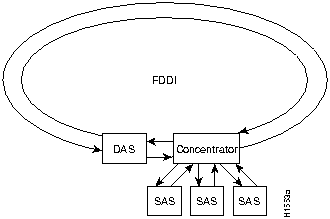
SASs (Class B) typically attach to the primary ring through a concentrator, which provides connections for multiple SASs. The concentrator ensures that a failure or power down of any SAS does not interrupt the ring. SASs use one transmit port and one receive port to attach to the single ring. DASs (Class A) have two physical ports, designated PHY A and PHY B, each of which connects the station to both the primary and secondary rings. Each port is a receiver for one ring and a transmitter for the other. For example, PHY A receives traffic from the primary ring and PHY B transmits to it.
The dual rings in an FDDI network provide fault tolerance. If a station on a dual ring shuts down or fails, such as Station 3 in Figure 2, the ring automatically wraps (doubles back on itself) to form a single contiguous ring. This removes the failed station from the ring, but allows the other stations to continue operation. In Figure 2, the ring wraps to eliminate Station 3 and forms a smaller ring that includes only Stations 1, 2, and 4. A second failure could cause the ring to wrap in both directions from the point of failure, which would segment the ring into two separate rings that could not communicate with each other.
For example, if Station 1 in Figure 2 fails after Station 3 fails, Stations 2 and 4 will each be isolated because no path for communication exists between them. Subsequent failures cause additional segmentation. Optical bypass switches avoid segmentation by eliminating failed stations from the ring.
An optical bypass switch allows the light signal to pass directly through it, completely bypassing the failed or shut down station. If an optical bypass switch had been installed at Station 3 in the example ring in Figure 2, it would have allowed the light signal to pass through the switch and maintain its existing path and direction without wrapping back on itself.
Figure 2 : DAS Station Failure and Ring Recovery Example
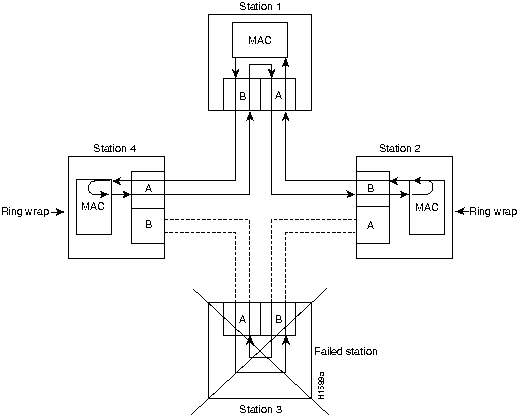
Another technique for fault tolerance is dual homing, whereby critical devices are attached to two concentrators. Only the designated primary concentrator is active unless it (or its link) fails. If the primary does fail, the backup (passive) concentrator is automatically activated and sustains the ring.
FDDI uses two types of fiber optic cable: single-mode (also called monomode) and multimode. Mode refers to the angle at which light rays (signals) are reflected and propagated through the optical fiber core, which acts as a waveguide for the light signals. Multimode fiber has a relatively thick core (62.5/125-micron) that reflects light rays at many angles. Single-mode fiber has a narrow core (8.7 to 10/125-micron) that allows the light to enter only at a single angle. Although multimode fiber allows more light signals to enter at a greater variety of angles (modes), the different angles create multiple propagation paths that cause the signals to spread out in time and limits the rate at which data can be accurately received. This distortion does not occur on the single path of the single-mode signal; therefore, single-mode fiber is capable of higher bandwidth and greater cable run distances that multimode fiber. In addition, multimode transmitters usually use LEDs as a light source, and single-mode transmitters use a laser diode, which is capable of sustaining faster data rates. Both types use a photodiode detector at the receiver to translate the light signal into electrical signals.
The FDDI standard sets total fiber lengths of 2 kilometers (1.2 miles) for multimode fiber and 10 kilometers (6.2 miles) for single-mode fiber. (The maximum circumference of the FDDI network is only half the specified distance because of signal wrapping or loopback that occurs during fault correction.) The standard allows a maximum of 500 stations with a maximum distance between active stations of 2 kilometers.
The FIP supports both Class A and Class B station connections and provides an interface for both single-mode and multimode fiber-optic cable. The two physical ports (PHY A and PHY B) are available with either single-mode (FC) or multimode, media interface connector (MICs), or with a combination of one of each for matching multimode and single-mode fiber in the same FDDI network.
The FIP FDDI implementation complies with Version 6.1 of the X3T9.5 FDDI specification, offering a Class A dual attachment interface that supports the fault-recovery methods of DAS. The FIP supports dual homing and optical bypass and complies with ANSI X3.1 and ISO 9314 FDDI standards.
The FIP contains a 16-million-instructions-per-second (mips) processor for high-speed (100-Mbps) interface rates and the industry-standard, AMD SuperNet chipset for interoperability. Figure 3 shows a multimode/multimode FIP on the bottom (CX-FIP-MM) and a single-mode/multimode FIP on the top (CX-FIP-SM). The FIP supports optical bypass on the CX-FIP-MM and CX-FIP-SS models. The default FIP microcode resides on a ROM in socket U23. (See Figure 3.)
Figure 3 : FIP, CX-FIP-MM (Bottom) and CX-FIP-SM (Top)
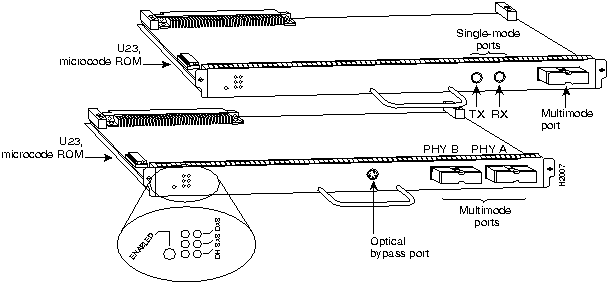
Each FIP provides a single network interface for both multimode and single-mode FDDI networks. The two FIP connectors are available in any combination of multimode (MIC) or single-mode (FC) connectors for matching multimode and single-mode fiber in the same FDDI network.
The following combinations are available:
Each FIP provides the interface for connection to a Class A DAS (with primary and secondary rings), or to a Class B SAS (with only a primary ring). The multimode or single-mode ports on the FIP provide a direct connection to the external FDDI network.
A six-pin mini-DIN connector on the multimode-multimode FIP (CX-FIP-MM) and the single-mode/single-mode FIP (CX-FIP-SS) provides the connection for an optical bypass switch. When the interface is shut down, the bypass switch allows the light signal to pass directly from the receive port to the transmit port on the bypass switch, completely bypassing the FIP transceivers. The bypass switch does not repeat the signal, and significant signal loss may occur when transmitting to stations at maximum distances. Optical bypass switches typically use a six-pin DIN or mini-DIN connector. A DIN-to-mini-DIN adapter cable is included with the CX-FIP-MM to allow connection to either type of connector. For a detailed description of optical bypass switch connections, refer to the section "Installing an Optical Bypass Switch" on page 26.
The FIP microcode (firmware) is a software image that provides card-specific software instructions and support for Connection Management (CMT) functions. A ROM in socket U23 contains the default FIP microcode.
The Cisco 7000 and Cisco 7500 series support downloadable microcode, which enables you to upgrade microcode versions by downloading new microcode images, storing them in Flash memory, and instructing the system to load an image from Flash instead of the default ROM image. You can store multiple images for an interface type, and with a configuration command you can instruct the system to load any one of them or the default ROM image. All interfaces of the same type (FIP, HIP, and so on) will load the same microcode image, either from the default ROM image or from a single image stored in Flash.
Although multiple microcode versions for a specific interface type can be stored concurrently in Flash, only one image can load at startup. The show controller cxbus command displays the currently loaded and running microcode version for each interface processor. The show configuration EXEC command shows the current system instructions for loading microcode at startup.
For a complete description of microcode and downloading procedures, refer to the section "Upgrading Microcode" on page 35.
FDDI Transceivers and Connectors
The single-mode interface uses simplex FC-type connectors (see Figure 4) for the transmit and receive ports. The connector accepts standard 8.7 to 10/125-micron, single-mode fiber-optic cable.
Figure 4 : Single-Mode FDDI Network Interface Connectors, FC Type
![]()
The multimode connector is an FDDI-standard physical sublayer (PHY) connector that encodes and decodes the data into a format acceptable for fiber transmission. The multimode connector accepts standard 62.5/125-micron, multimode fiber-optic cable using the media interface cable (MIC) and, with proper cable terminators, can accept 50/125 micron fiber-optic cable. Multimode uses the integrated MIC shown in Figure 5, at both the FIP and network end.
Figure 5 : Multimode FDDI Network Interface Connector, MIC Type

The single-mode/single-mode FIP (CX-FIP-SS) and multimode/multimode FIP (CX-FIP-MM) each provide a control port for an optical bypass switch, which allows the light signal to pass directly through the bypass switch, completely bypassing the FIP transceivers when the interface is shut down. Most optical bypass switches provide the necessary interface cables for connection to the single-mode or multimode transceivers.
What Is the Cisco 7000 Series?
The FIP provides a 100-Mbps FDDI network interface for Cisco 7000 series routers. Network interfaces reside on modular interface processors, which provide a direct connection between the high-speed Cisco Extended Buses (CxBus) and the external networks.
Figure 6 and Figure 7 show the rear of the Cisco 7000 series routers: the seven-slot model 7000 and the five-slot model 7010. Both use the CxBus. Access to the processor slots and the removable power supplies is from the rear, as shown. Two of the slots are reserved for the Route Processor (RP), which contains the system processor, and the Switch Processor (SP) or Silicon Switch Processor (SSP), each of which performs packet-switching functions. The remaining five (or three) slots, numbered 0 to 4 from left to right (or 0 to 2 from bottom to top), support any combination of network interface types: serial, Ethernet, Fast Ethernet, Token Ring, FDDI, multichannel, channel attachment, or High-Speed Serial Interface (HSSI).
Figure 6 : Cisco 7000, Interface Processor End
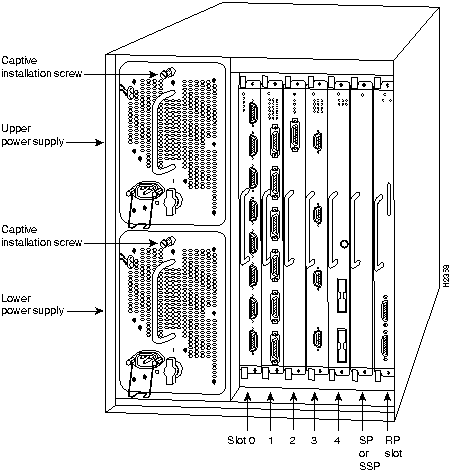
Figure 7 : Cisco 7010, Interface Processor End
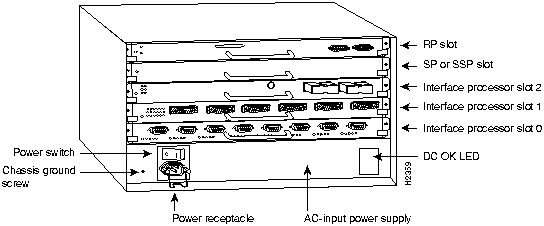
What Is the Cisco 7500 Series?
The Cisco 7500 series consists of three router models: the Cisco 7505, the Cisco 7507, and the Cisco 7513. All three models provide high reliability, availability, serviceability, and performance. The three systems support multiprotocol, multimedia routing, and bridging with a wide variety of protocols and any combination of Ethernet, Fast Ethernet, Token Ring, FDDI, serial, multichannel, channel attachment, and HSSI media. Network interfaces reside on modular interface processors, which provide a direct connection between the high-speed, 1.067-gigabits-per-second (Gbps) Cisco Extended Bus (CyBus) and the external networks.
Figure 8 shows the rear of the five-slot Cisco 7505 router. In the Cisco 7505, one slot (4) is reserved for the Route Switch Processor (RSP1), which contains the system processor and performs packet switching functions. Slots 0 through 3 are for interface processors.
Figure 8 : Cisco 7505, Interface Processor End

Figure 9 shows the rear of the seven-slot Cisco 7507 router. In the Cisco 7507, up to two slots (2 and 3) are reserved for the Route Switch Processor (RSP2), which contains the system processor and performs packet switching functions. Slots 0 and 1, and 4 through 6 are for interface processors.
Figure 9 : Cisco 7507, Interface Processor End
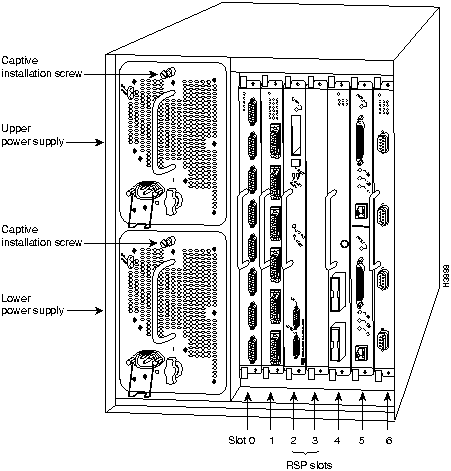
Figure 10 shows the rear of the Cisco 7513, with two AC-input power supplies installed. Two slots (6 and 7) are reserved for the second generation Route Switch Processor (RSP2), which contains the system processor and performs packet switching functions. Slots 0 through 5, and 8 through 12 are for interface processors.
Figure 10 : Cisco 7513, Interface Processor End
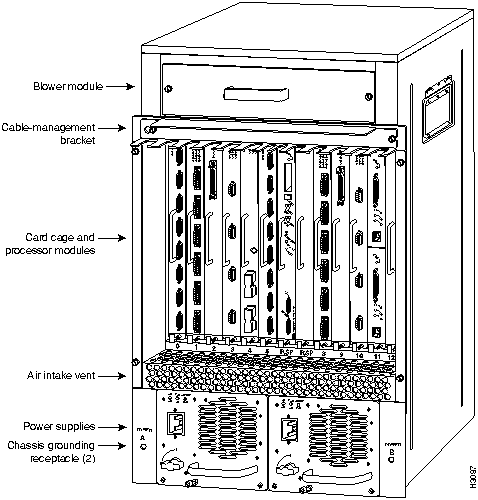
Before you begin the installation procedures, review the safety and ESD-prevention guidelines in this section to avoid injuring yourself or damaging the equipment. This section also provides a list of parts and tools you will need to perform the installation.
Distance Limitations for FDDI Connections
The distance limitations for single-mode and multimode FDDI stations are shown in Table 1. If the distance between two connected stations is greater than the maximum distance shown, significant signal loss can result. The single-mode transmitter and the multimode transceiver each provide 11 dB of optical power.
Table 1 : FDDI Maximum Transmission Distances
| Transceiver Type | Maximum Distance Between Stations |
|---|---|
| Single-mode | Up to 6.2 miles (up to 10 km) |
| Multimode | Up to 1.2 miles (up to 2 km) |
This section provides special warnings for FDDI transmitter components and safety guidelines you should follow when working with any equipment that connects to electrical power or telephone wiring.
The single-mode transmitter uses a small laser to transmit the light signal to the ring. Keep the transmit port covered whenever a cable is not connected to it. Although multimode transceivers typically use LEDs for transmission, it is good practice to keep open ports covered and avoid staring into open ports or apertures.
![]()
Follow these basic guidelines when working with any electrical equipment:
Use the following guidelines when working with any equipment that is connected to telephone wiring or to other network cabling:
Preventing Electrostatic Discharge Damage
Electrostatic discharge (ESD) damage, which can occur when electronic cards or components are improperly handled, results in complete or intermittent failures. The FIP comprises a printed circuit board that is fixed in a metal carrier. Electromagnetic interference (EMI) shielding, connectors, and a handle are integral components of the carrier. Although the metal carrier helps to protect the board from ESD, use a preventive antistatic strap whenever handling the FIP. Handle the carriers by the handles and the carrier edges only; never touch the boards or connector pins.
Following are guidelines for preventing ESD damage:
Online Insertion and Removal---An Overview
Online insertion and removal (OIR) allows you to remove and replace interface processors while the system is operating; you do not need to notify the software or shut down the system power. This section describes the mechanical functions of the system components and stresses the importance of following the correct procedures to avoid unnecessary restarts or card failures. This section is for background information only. Subsequent sections provide specific procedures for removing and installing an FIP. All CxBus and CyBus interface processors support OIR.
Each processor module contains a bus connector with which it connects to the system backplane. The bus connector is a set of tiered pins, in three lengths. The pins send specific signals to the system as they make contact with the backplane. The system assesses the signals it receives and the order in which it receives them to determine what event is occurring and what task it needs to perform, such as reinitializing new interfaces or shutting down removed ones. For example, when you insert an interface processor, the longest pins make contact with the backplane first, and the shortest pins make contact last. The system recognizes the signals and the sequence in which it receives them. The system expects to receive signals from the individual pins in this logical sequence, and the ejector levers help to ensure that the pins mate in this sequence. When you remove or insert an interface processor, the backplane pins send signals to notify the system, which then performs as follows:
OIR functionality enables you to add, remove, or replace interface processors with the system online, which provides a method that is seamless to end users on the network, maintains all routing information, and ensures session preservation.
When you insert a new interface processor, the system runs a diagnostic test on the new interfaces and compares them to the existing configuration. If this initial diagnostic test fails, the system remains off line for another 15 seconds while it performs a second set of diagnostic tests to determine whether or not the interface processor is faulty and if normal system operation is possible. If the second diagnostic test passes, which indicates that the system is operating normally and the new interface processor is faulty, the system resumes normal operation but leaves the new interfaces disabled.
If the second diagnostic test fails, the system crashes, which usually indicates that the new interface processor has created a problem on the bus and should be removed. The system brings online only interfaces that match the current configuration and were previously configured as up; all other interfaces require that you configure them with the configure command. On interface processors with multiple interfaces, only the interfaces that have already been configured are brought online. The new interface remains in the administratively shutdown state until you configure it and bring it online.
The function of the ejector levers (see Figure 11) is to align and seat the card connectors in the backplane. Failure to use the ejectors and insert the interface processor properly can disrupt the order in which the pins make contact with the backplane. Follow the FIP installation and removal instructions carefully, and review the following examples of incorrect insertion practices and results:
It is also important to use the ejector levers when removing an interface processor to ensure that the board connector pins disconnect from the backplane in the logical sequence expected by the system. Any processor module that is only partially connected to the backplane can hang the bus. Detailed steps for correctly performing OIR are included with the following procedures for installing and removing a FIP.
Figure 11 : Bottom Ejector Lever and Captive Installation Screw
You need the following tools and parts to install a FIP. If you need additional equipment, contact a customer service representative for ordering information.
The following sections describe the procedures for removing or installing a FIP in the router. The OIR function allows you to install and remove a FIP without shutting down the system power; however, you must follow the insertion instructions carefully. For example, failure to use the ejector levers or insert the FIP properly can cause system error messages indicating a board failure. For a complete description of OIR, refer to the section "Online Insertion and Removal---An Overview" on page 14.
Each unused interface processor slot contains an interface processor filler (which is an interface processor carrier without an interface board) to keep dust out of the chassis and to maintain proper air flow through the interface processor compartment. If you are installing a new FIP that is not a replacement, you must first remove the interface processor filler from an unused slot; proceed to the section "Removing an Interface Processor Filler." If you are replacing a FIP or upgrading the microcode EPROM on a FIP, proceed to the section "Removing a FIP."
Removing an Interface Processor Filler
Select an unused interface processor slot for the new FIP and remove the interface processor filler as follows:
To help prevent dust and contaminants from entering the chassis, do not leave the interface processor slot open. Immediately proceed to the section "Connecting FDDI Interface Cables" on page 21.
If you are replacing a failed FIP, remove the existing board first, then replace the new FIP in the same slot. Figure 12 shows proper handling of an interface processor during installation.
To remove a FIP, follow these steps:
Figure 12 : Handling an Interface Processor During Installation and Removal
Immediately proceed to the section "Installing a FIP."
The FIP slides into the open interface processor slot and directly to the backplane. The interface processors are keyed to guide pins on the backplane, so the FIP can be installed only in an interface processor slot. (The location of interface processor slots depends on your chassis model; refer to Figure 6, Figure 7, Figure 8, Figure 9, or Figure 10). Figure 11 shows the functional details of inserting an interface processor and using the ejectors. Figure 12 shows proper handling of an interface processor during installation.
Follow these steps to install a FIP:
Proceed to the following section to attach network interface cables.
Connecting FDDI Interface Cables
Following are detailed instructions for connecting the FIP as either a single attachment or dual attachment station to both single-mode and multimode networks. Single-mode uses separate transmit and receive cables. You will need two single-mode cables for a single attachment connection or four cables for a dual attachment connection. Multimode uses one integrated transmit/receive cable for each physical interface (one for PHY A and one for PHY B). You will need one multimode cable for a single attachment connection, and two cables for a dual attachment connection. Figure 18, which shows the connections for a dual attachment connection that uses both single-mode and multimode fiber, illustrates the types of connections used for both fiber modes. For cable and connector descriptions, refer to the section "FDDI Transceivers and Connectors" on page 6.
This section also provides instructions for connecting an optical bypass switch to a dual attachment multimode network connection. Because the method of connecting optical bypass switches varies between different manufacturer's models, refer to the documentation for your particular bypass switch for correct connection instructions. If you are installing an optical bypass switch, proceed to the section "Installing an Optical Bypass Switch" on page 26.
A FIP that is connected as a single attachment station typically is connected to the ring through a concentrator. The FIP receives and transmits the signal through the same physical interface, usually PHY A. Depending upon whether you are connecting to a single-mode of multimode fiber network, connect the FIP as follows:
If you are connecting other FIPs as dual attachment stations, proceed to the following section. Otherwise, proceed to the section "Checking the Installation" on page 27.
Figure 13 : SAS, Single-Mode Fiber Network Connections (CX-FIP-SS)
Figure 14 : SAS, Multimode Fiber Network Connections (CX-FIP-SM)
A FIP that is connected as a dual attachment station connects to both the primary and secondary rings. The signal for each ring is received on one physical interface (PHY A or PHY B) and transmitted from the other. The standard connection scheme (shown in Figure 15) for a dual attachment station dictates that the primary ring signal comes into the FIP on the PHY A receive port and returns to the primary ring from the PHY B transmit port. The secondary ring signal comes into the FIP on the PHY B receive port returns to the primary ring from the PHY A transmit port. Failure to observe this relationship will prevent the FDDI interface from initializing. Figure 18 shows the connections for a dual attachment that uses both multimode and single-mode fiber.
Depending upon whether you are connecting to a single-mode or multimode fiber network, connect the FIP as follows:
If you are connecting other FIPs to an optical bypass switch, proceed to the next section. Otherwise, proceed to the section "Checking the Installation" on page 27.
Figure 16 : DAS, Single-Mode Fiber Network Connections (CX-FIP-SS)
Figure 17 : DAS, Multimode Fiber Network Connections (CX-FIP-MM)
If you are connecting other FIPs to an optical bypass switch, proceed to the next section. Otherwise, proceed to the section "Checking the Installation" on page 27.
Figure 18 : DAS Connection, Mixed Mode (CX-FIP-SM)
Installing an Optical Bypass Switch
An optical bypass switch is a device installed between the ring and the station that provides additional fault tolerance to the network. If a FIP that is connected to a bypass switch fails or shuts down, the bypass switch activates automatically and allows the light signal to pass directly through it, bypassing the FIP completely. A port for connecting an optical bypass switch is provided on the multimode/multimode FIP (CX-FIP-MM, shown in Figure 19), and the single-mode/single-mode FIP (CX-FIP-SS, shown in Figure 20).
Figure 19 : Optical Bypass Switch Connection (CX-FIP-MM)
Figure 20 : Optical Bypass Switch Connection (CX-FIP-SS)
Following are general instructions for connecting an optical bypass switch to the FIP; however, your particular bypass switch may require a different connection scheme. Use these steps and the illustrations in Figure 19 and Figure 20, on page page 26, as general guidelines, but for specific connection requirements, refer to the instructions provided by the manufacturer of the switch.
Proceed to the following section to check the installation.
After you install the FIP, verify the installation by observing the LED states and the console display. When the system has reinitialized all interfaces, the enabled LED on the FIP and on all interface processors should go on. The console screen will also display a message as the system discovers each interface during its reinitialization.
When you remove and replace interface processors, the system provides status messages on the console screen. The messages are for information only.
The following sample display shows the events logged by the system as a FIP was removed from slot 1; the system then reinitialized the remaining interface processors and marked as down the FDDI interface on the FIP that was removed from slot 1. When a new FIP was reinserted, the system automatically brought up the interface because it was up when the FIP was removed.
When a new FIP is inserted or when a FIP is moved to a new slot, the system recognizes the new FDDI interface, but leaves the interface in a down state until you configure it and change the state to up with the configure command. The following example display shows the events logged by the system as a new FIP is inserted in slot 3:
Verify that the FIP is installed correctly as follows:
If you experience problems that you are unable to solve, contact a service representative for assistance.
Configuring the FDDI Interface
If you installed a new FIP or if you want to change the configuration of an existing interface, you must enter the configuration mode. If you replaced an FIP that was previously configured, the system will recognize the new FIP interfaces and bring each of them up in their existing configuration.
After you verify that the new FIP is installed correctly (the enabled LED goes on), use the privileged-level configure command to configure the new interfaces. Be prepared with the information you will need, such as the following:
Refer to the Router Products Configuration Guide publication for a summary of the configuration options available and instructions for configuring FDDI interfaces.
Using the EXEC Command Interpreter
Before you use the configure command, you must enter the privileged level of the EXEC command interpreter with the enable command. The system will prompt you for a password if one has been set.
The system prompt for the privileged level ends with a pound sign (#) instead of an angle bracket (>). At the console terminal, enter the privileged level as follows:
Proceed to the following section to configure the new interfaces.
Following are instructions for a basic configuration: enabling an interface and specifying IP routing on an FDDI interface. You might also need to enter other configuration subcommands, depending upon the requirements for your system configuration and the protocols you plan to route on the interface. For complete descriptions of configuration subcommands and the configuration options available for FDDI interfaces, refer to the Router Products Configuration Guide.
Cisco 7000 series and 7500 series routers identify an interface address by its slot number and port number in the format slot/port. Each FIP contains one interface, which is always port (interface) 0. For example, the slot/port address of the FDDI interface on a FIP installed in interface processor slot 1 is 1/0. The address of an FDDI port on a FIP in slot 2 would be 2/0. The following section describes a basic configuration.
Following are instructions for a basic configuration: enabling FDDI interfaces and specifying IP routing. You might also need to enter other configuration subcommands, depending upon the requirements for your system configuration (configuration subcommands are described in the Router Products Command Reference publication). Press the Return key after each configuration step unless otherwise noted.
Proceed to the following section to check the interface configuration with show commands.
After configuring the new interface, use the show commands and status LEDs to check the status of the new interface or all interfaces.
Command Descriptions and Examples
Following are descriptions and examples of the show commands. Descriptions are limited to fields that are relevant for verifying the configuration.
Using Show Commands to Verify the FIP Status
The following procedure describes how to use the show commands to verify that the new interface is configured correctly:
If the new interface is down and you configured it as up, or if the displays indicate that the hardware is not functioning properly, ensure that the FDDI network interface cables are properly connected. If you still have problems bringing the interface up, contact a service representative for assistance.
Proceed to the following section to check the status of the new FDDI interface by observing the status LEDs on the FIP.
The FIP contains the bank of LEDs shown in Figure 21.
The enabled LED goes on to indicate that the FIP is operational and that it is enabled for operation. It does not mean that the interface ports are functional or enabled. The left vertical row of three LEDs indicates the status of PHY B, the right vertical of three LEDs indicates the status of PHY A (the PHY B interface is located next the PHY A interface on the face of the FIP). The state of each B/A pair of LEDs indicates the status of one type of three possible station connections: DAS, SAS, or dual homed.
The following conditions must be met before the FIP is enabled:
If any one of these conditions is not met, or if the initialization fails, the enabled LED does not go on.
The states of the FIP LED combinations, and the meanings of each are described and illustrated in Table 2.
Table 2 : FIP LED States, Refer to Figure 21
The Cisco 7000 series and Cisco 7500 series support downloadable microcode, which enables you to upgrade microcode versions without having to physically replace the EPROMs on the boards. You can download new microcode versions and store multiple versions in Flash memory, and you can boot from them just as you can with the system software images. System software upgrades may also contain upgraded microcode images, which will load automatically when the new software image is loaded.
This section describes how to use and configure downloadable microcode and, if necessary, how to replace the microcode EPROM on the FIP.
Downloading Microcode to Flash Memory
You can download microcode to Flash memory by copying the TFTP image of a microcode version to Flash memory. When the microcode image is stored in Flash memory, you can use the microcode reload command to manually load the new microcode file, and the configure command to instruct the system to load the new image automatically at each system boot.
To compare the size of the microcode image and the amount of Flash memory available, you must know the size of the new microcode image. The image size is specified in the README file that is included on the floppy disk with the new image. Note the size of the new image before proceeding to ensure that you have sufficient available Flash memory for the new image.
Follow these steps to copy a microcode version from the TFTP server to Flash memory:
This completes the procedure for downloading microcode to Flash memory.
Cisco Information Online (CIO) is Cisco Systems' primary, real-time support channel. Maintenance customers and partners can self-register on CIO to obtain additional content and services.
Available 24 hours a day, 7 days a week, CIO provides a wealth of standard and value-added services to Cisco's customers and business partners. CIO services include product information, software updates, release notes, technical tips, the Bug Navigator, configuration notes, brochures, descriptions of service offerings, and download access to public and authorized files.
CIO serves a wide variety of users through two interfaces that are updated and enhanced simultaneously---a character-based version and a multimedia version that resides on the World Wide Web (WWW). The character-based CIO (called "CIO Classic") supports Zmodem, Kermit, Xmodem, FTP, Internet e-mail, and fax download options, and is excellent for quick access to information over lower bandwidths. The WWW version of CIO provides richly formatted documents with photographs, figures, graphics, and video, as well as hyperlinks to related information.
You can access CIO in the following ways:
For a copy of CIO's Frequently Asked Questions (FAQ), contact
Copyright 1988-1996 © Cisco Systems Inc.

![]()
![]()
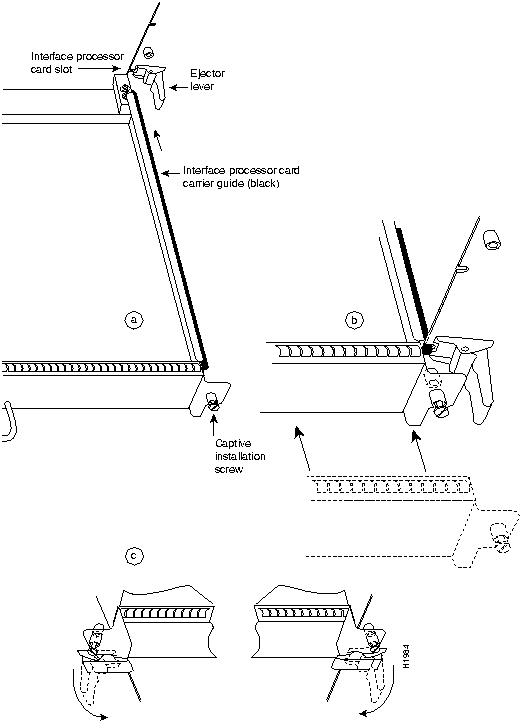
![]()
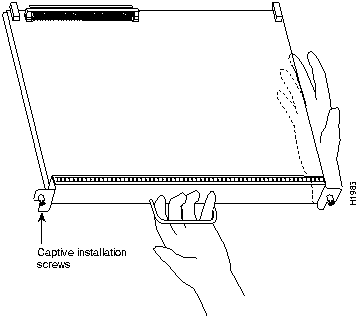
![]()
![]()
![]()
![]()
![]()
![]()

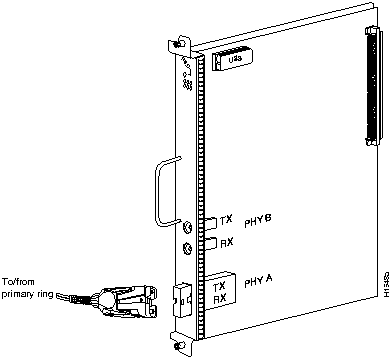

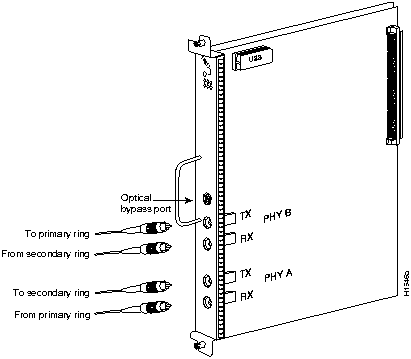
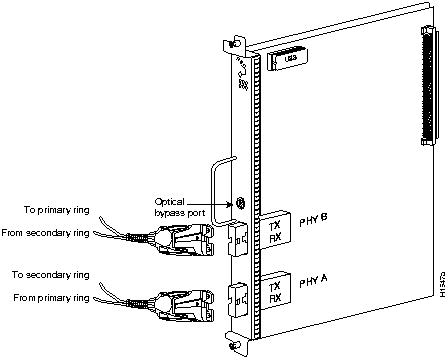
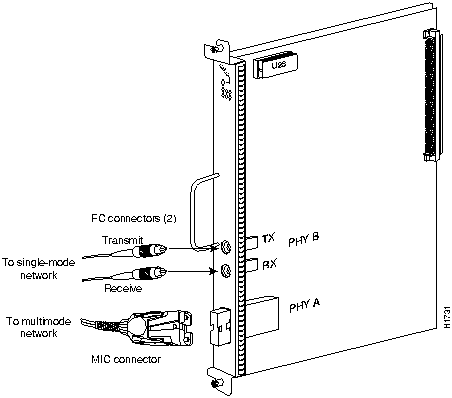
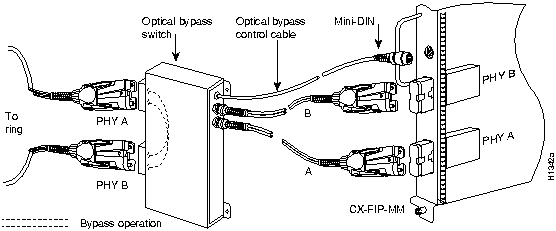
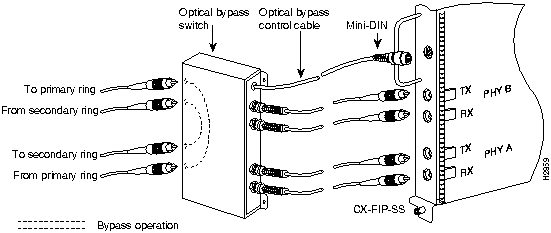
Router#
%OIR-6-REMCARD: Card removed from slot 1, interfaces disabled
%LINK-5-CHANGED: Interface Fddi1/0, changed state to administratively down
Router#
%OIR-6-INSCARD: Card inserted in slot 1, interfaces administratively shut down
%LINK-5-CHANGED: Interface Fddi1/0, changed state to up
Router#
%OIR-6-INSCARD: Card inserted in slot 3, interfaces administratively shut down
Router>
enable
Password:
Router#
Router#
configure terminal
Enter configuration commands, one per line. End with CNTL/Z
Router(config)#
Router(config)#
interface fddi 2/0
Router(config-int)#
ip address 145.1.1.1 255.255.255.0
Router(config-int)#
no shutdown
Router#
copy running-config startup-config
Router#
disable
Router> show version
GS Software (GS7), Version 10.3(5)
Copyright (c) 1986-1995 by cisco Systems, Inc.
Compiled Wed 10-May-95 14:44
System Bootstrap, Version 4.6(1)
Current date and time is Fri 2-26-1993 2:18:52
Boot date and time is Fri 1-29-1993 11:42:38
Router uptime is 3 weeks, 6 days, 14 hours, 36 minutes
System restarted by power-on
Running default software
Network configuration file is "Router", booted via tftp from 1.1.1.333
RP1 (68040) processor with 16384K bytes of memory.
X.25 software, Version 2.0.
Bridging software.
1 Switch Processor.
1 EIP controller (6 Ethernet).
1 TRIP controller (4 Token Ring).
6 Ethernet/IEEE 802.3 interface.
(display text omitted)
Router> show protocols
Global values:
Internet Protocol routing is enabled
Serial1/0 is up, line protocol is up
(display text omitted)
Router# show config
Using 1652 out of 130048 bytes
version 10.3(5)
!
hostname Router
!
enable-password guessagain
!
microcode TRIP flash fip10-0
microcode reload
(display text omitted)
!
interface Fddi3/0
ip address 1.1.1.14 255.255.255.0
ip route-cache cbus
no keepalive
novell network 1033
!
(display text omitted)
Router> show cont cxbus
(display text omitted)
FIP 3, hardware version 1.3, microcode version 141.12
Interface 24 - Fddi3/0, station addr 0000.0c02.adf1 (bia 0000.0c02.adf1)
13 buffer RX queue threshold, 33 buffer TX queue limit, buffer size 4484
ift 0006, rql 9, tq 0000 0000, tql 32
(display text omitted)
Router> show int fddi3/0
Fddi3/0 is up, line protocol is up
Hardware is cxBus Fddi, address is 0000.0c02.adf1 (bia 0000.0c02.adf1)
Internet address is 1.1.1.14, subnet mask is 255.255.255.0
MTU 4470 bytes, BW 100000 Kbit, DLY 100 usec, rely 255/255, load 1/255
Encapsulation SNAP, loopback not set, keepalive not set
ARP type: SNAP, ARP Timeout 4:00:00
PHY A state is active, neighbor is B, cmt signal bits 008/20C, status ILS
PHY B state is active, neighbor is A, cmt signal bits 20C/008, status ILS
CFM is thru A, token rotation 5000 usec, ring operational 15:25:31
Upstream neighbor 0000.0c01.261a, downstream neighbor 0000.0c01.4117
(display text omitted)
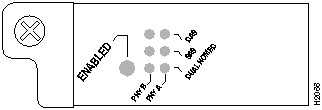
LED Pattern1
State
Indication
B A
DAS
-- --
X X
X X
Both lights off
Not connected
O O
X X
X X
Both lights on
Through A
O --
X X
X X
B on and A off
Wrap B
-- O
X X
X X
B off and A on
Wrap A
B A
SAS
X X
-- --
X X
Both lights off
Not connected
X X
O --
X X
B on and A off
Single attachment B (PHY A shut down)
X X
-- O
X X
B off and A on
Single attachment A (PHY B shut down)
B A
Dual Homed
X X
X X
-- --
Dual homed B and A off
Not connected
X X
X O
O O
Single attachment A on
Dual homed B and A on
Dual homed with A active; not a normal condition; indicates potential problem on B
X X
O X
O O
Single attachment B on
Dual homed B and A on
Dual homed with B active, which is a normal condition
X X
O X
O X
Single attachment B on
Dual homed B on
Single attachment B
Dual homed A failed
X X
X O
X O
Single attachment A on
Dual homed A on
Single attachment A
Dual homed B failed
1 For the LED patterns "" means off, "O" means on, and "X" means does not apply. Refer to Figure21.
![]()
Router#
show flash
4096K bytes of flash memory on embedded flash (in RP1).
file offset length name
0 0xD134 55410 sp1-2
[4085336/4194304 bytes free]
buffer overflow - xxxx/xxxx
Router#
copy tftp flash
IP address or name of remote host [255.255.255.255]?
1.1.1.106
Name of file to copy?
fip10-1
Copy fip10-1 from 1.1.1.106 into flash memory? [confirm]
OR
Erase flash before writing? [confirm]
no
Loading from 1.1.1.106: !!!!!!!!!!!!!!!!!!!!!!!!!!!!!!!!!!!!!!!!!!!!!!!!!!!!
[OK - 108966/4194304 bytes]
Verifying via checksum...
Flash verification successful. Length = 53364, checksum = 0x0000
Router#
show flash
4096K bytes of flash memory on embedded flash (in RP1).
file offset length name
0 0x40 55410 sp1-2
1 0xD0D4 53364 fip10-1
[4085336/4194304 bytes free]
Router#
configure terminal
Enter configuration commands, one per line. End with CNTL/Z.
Router(config)#
Router(config)#
microcode fip flash fip1-1
Router#
copy running-config startup-config
Router#
configure
Enter configuration commands, one per line. End with CNTL/Z.
Router(config)#
microcode reload
Router#
show configuration
http://www.cisco.com
.
cio.cisco.com
.
ciohelp@cisco.com.
For additional information, contact
cioteam@cisco.com.
tac@cisco.com.
To obtain general information about Cisco Systems, Cisco products, or upgrades, contact 800 553-6387, 408 526-7208, or
csrep@cisco.com.

![]()
![]()
![]()
![]()
![]()
![]()
![]()
![]()